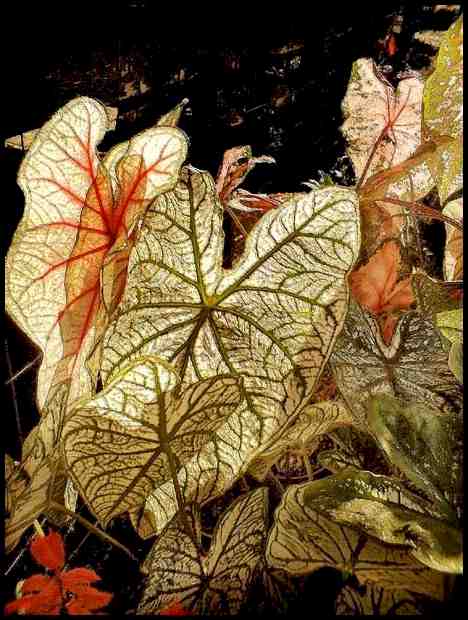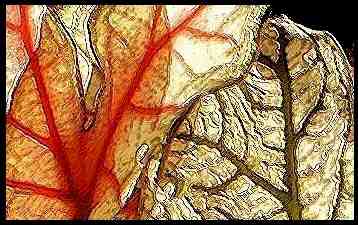| The photographic art of | © 2005 Robert F. Burgess. All rights reserved. |
|
| < home |  |
Email:hunterb4@gtcom.net |
| The photographic art of | © 2005 Robert F. Burgess. All rights reserved. |
|
| < home |  |
Email:hunterb4@gtcom.net |
 title: Caladiums title: Caladiums(see the full-size close-up below),/strong> Happenstance has lots to do with what scenes get seen as prints when and if a photographer has his camera handy. I remember a colorful two-page spread run in the middle of Popular Photography Annual one year. It was a remarkable snow scene of a Vermont home surrounded by late evening blue light photographed in the trackless depths of a Vermont winter. A viewer might wonder how the photographer managed to be in that wondrously beautiful trackless snowscape in time to catch that exquisite image."I had a flat tire on the road in front of this place. When I became aware of this scene under that late evening blue light I grabbed my camera and tripod and shot it," professional photographer Robert Holland told me. I call such scenes a happenstance shot. They just happen. You look up and there they are. If you have your wits about you and your camera gear at hand, you capture it. Otherwise it’s lost to posterity. My happenstance shot occurred late one afternoon as I drove across the river to purchase some vegetables at a roadside market. As I started to go in, my eye was attracted to these caladiums for sale in front. The setting sun directly behind the plants illuminated their veins and subtle shadings with amber sunlight. And as luck would have it, I simple reached out with my digital camera and without viewing the subject, shot what the camera and I saw. Pure happenstance. In the computer I sharpened the image, enhanced the amber colors as I saw them, and added a black ink outline to details. Again, the enlargement accentuates what I saw in this happenstance image of red and green veined back-lighted caladiums. |
This is a close-up image from the full-size print, showing the detail involved |
 |